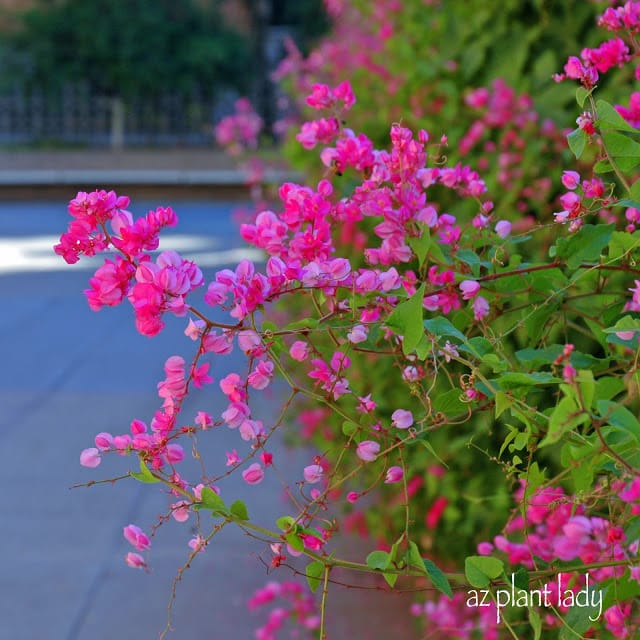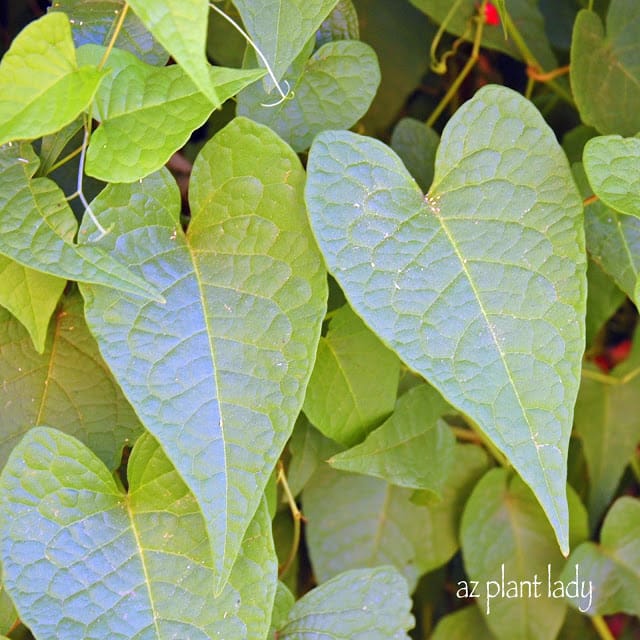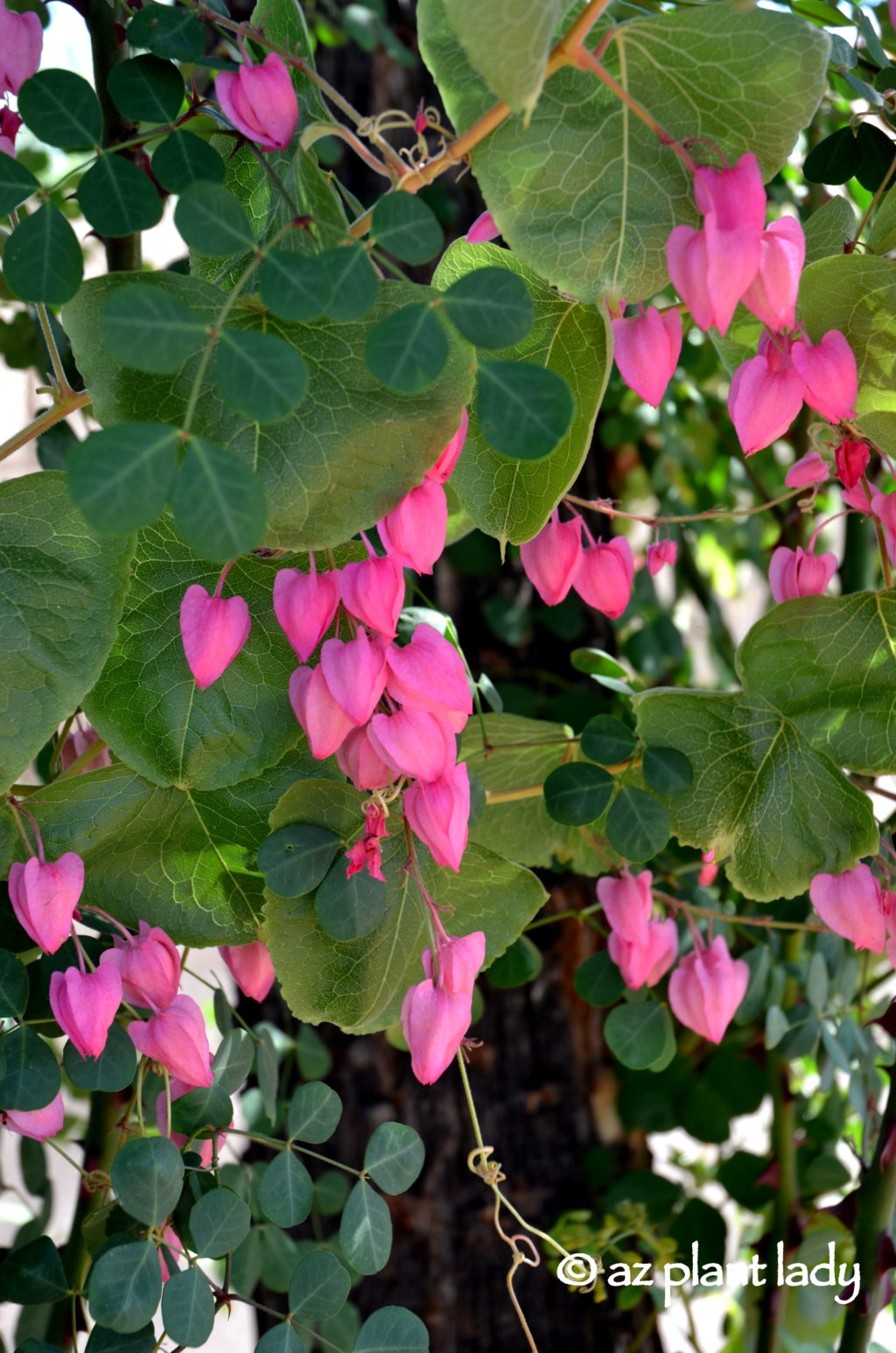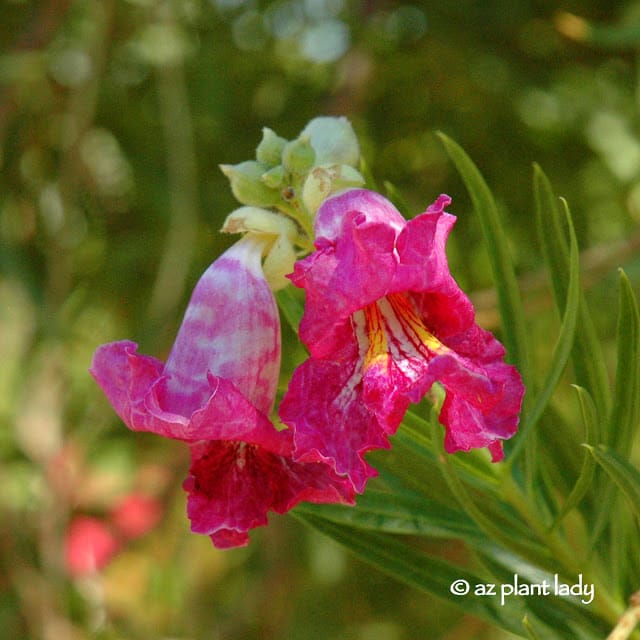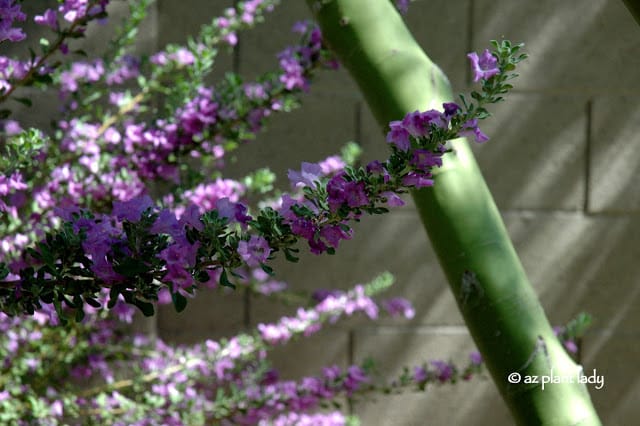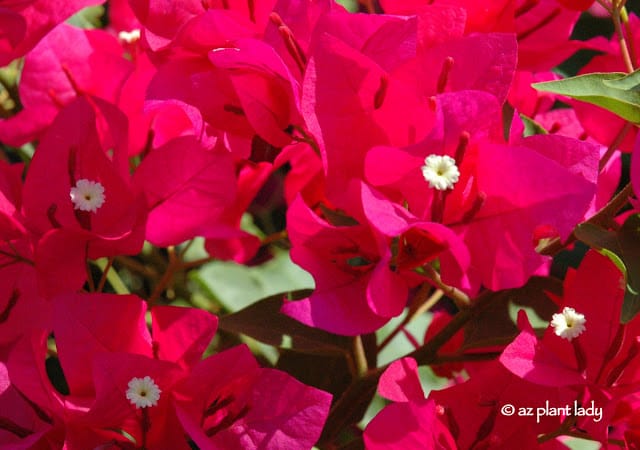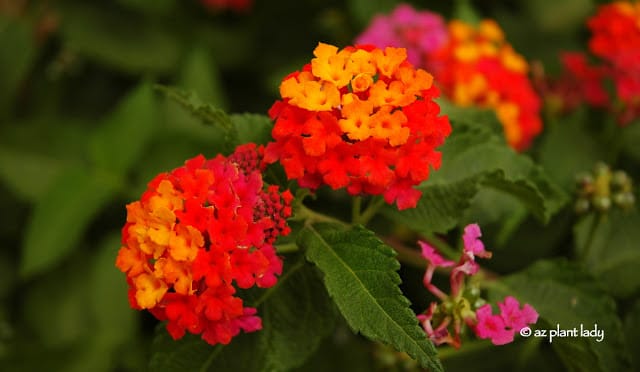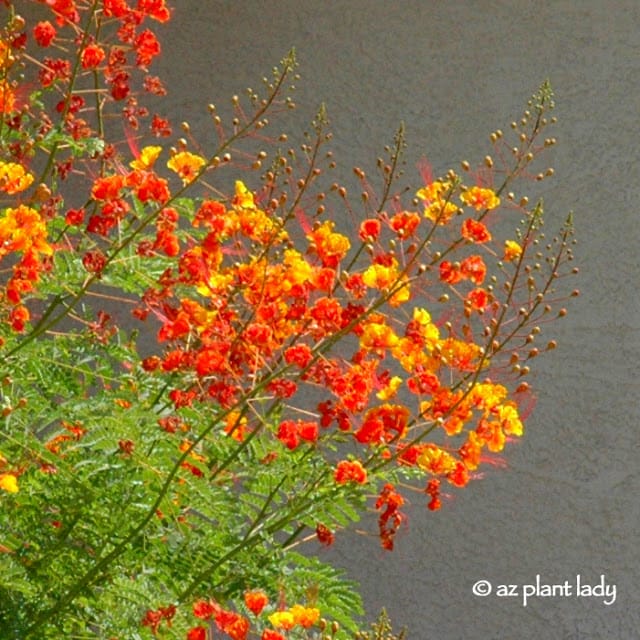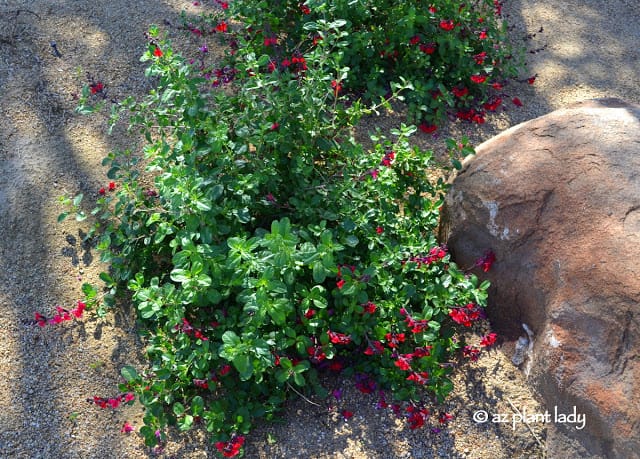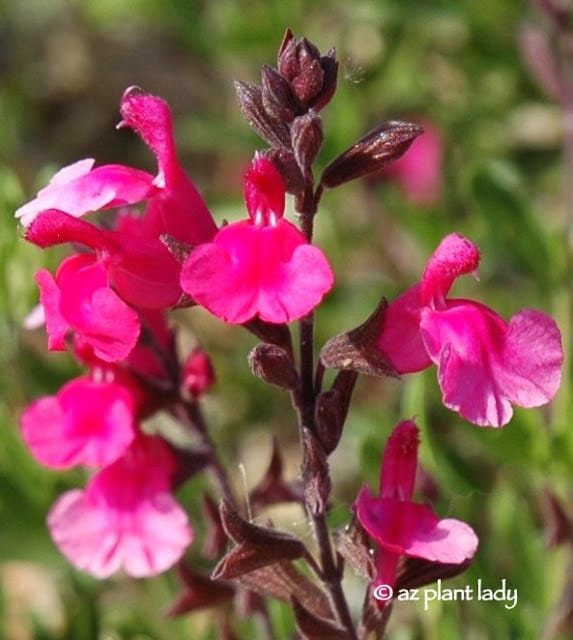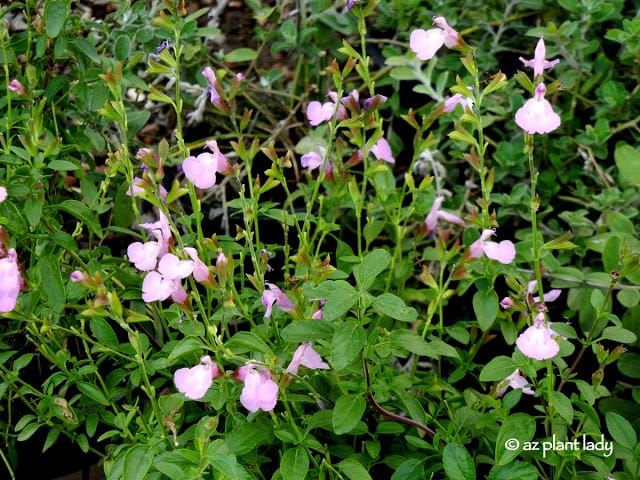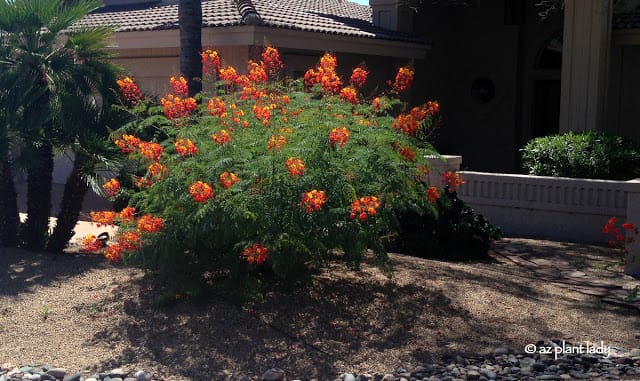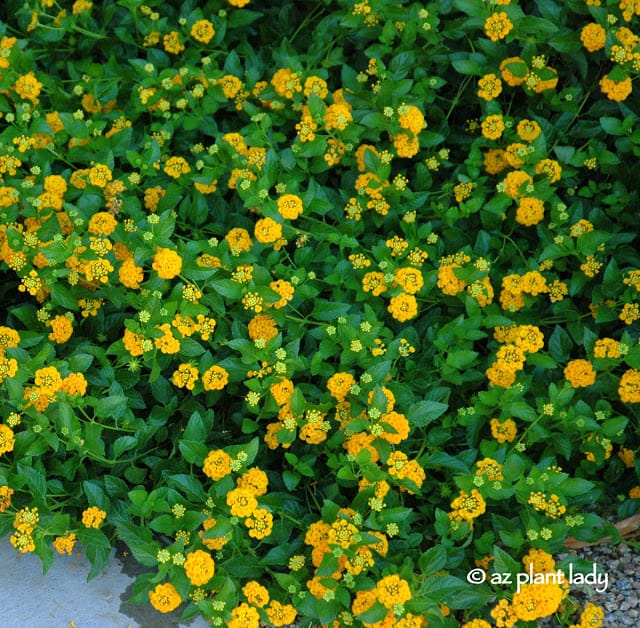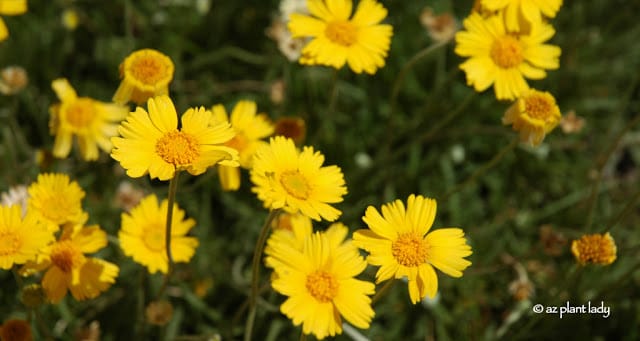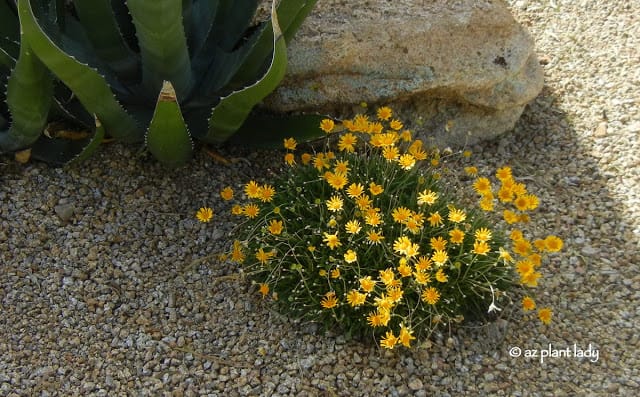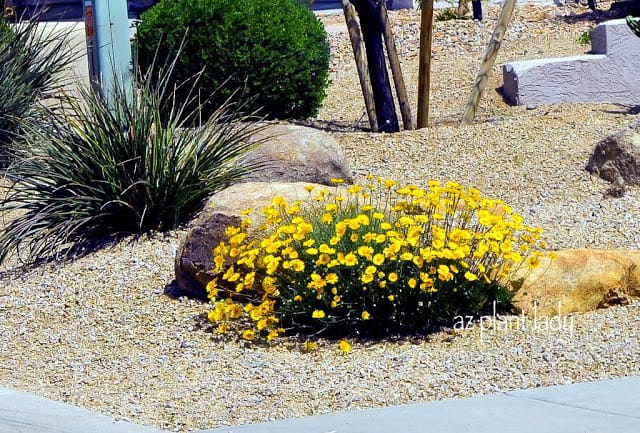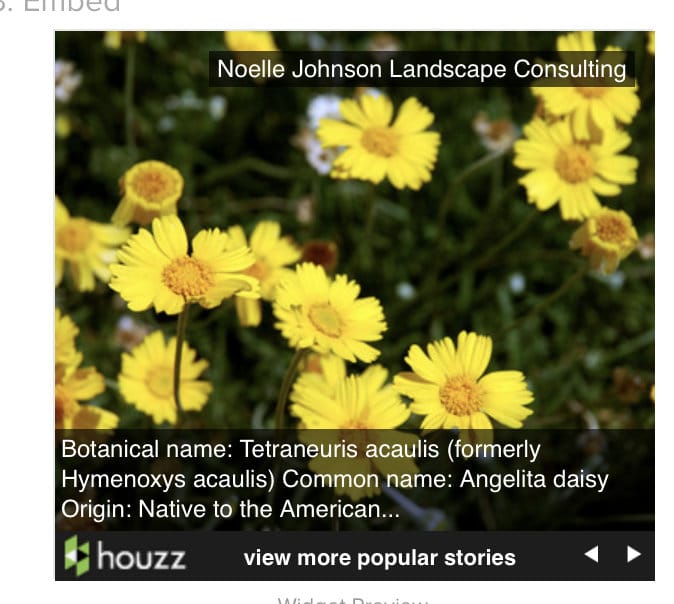One of the things that I love about gardening in the desert is how many beautiful plants that can not just survive our arid climate, but thrive in it.
Besides our native desert plants, many tropical plants also do very well here due to our relatively mild winter in our semi-tropical climate. Quite a few of these plants are native to Mexico.
So far in our lesser-known plant spotlight, we have highlighted two flowering shrubs that will add interest to your garden…..Valentine and Chaparral Sage.
So now for our next featured plant.
If you love the shape of water as it cascades from a fountain and the bright colors of coral, then you definitely want to include coral fountain (Russelia equisetiformis) in your garden.
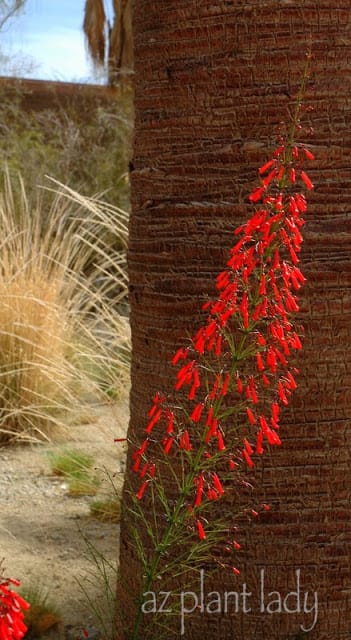
Aren’t the flowers just so beautiful?
Although this beautiful plant is native to Mexico, it does exceptionally well in our arid climate – in fact, the coral fountain in the photos is planted in sandy soil. The leaves are hard to see and are small and scale-like in appearance.
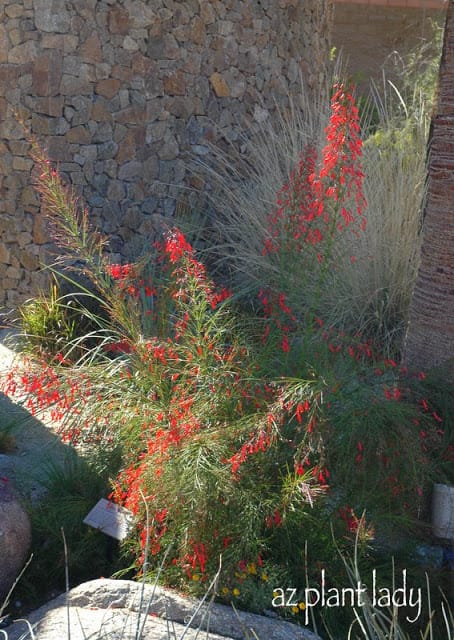
Here are some reasons that you should definitely try coral fountain out in your garden:
– Striking coral colored flowers continually grace this shrub during the warm months of the year.
– It can reach a mature size of 4 ft. high and 4 – 6 ft. wide.
– Hummingbirds will be in heaven if you plant this pretty flowering shrub.
– Coral fountain is tolerant of a variety of conditions. Well-drained soils or wet soils, arid climates or tropical climates and handles full sun or filtered shade.
– It grows quickly, so you do not have to wait a long time for its showy display of flowers.
– Because of its tropical origins, it is not cold hardy. It does suffer frost damage when temperatures dip below 32 degrees F. You can help to protect coral fountain from frost by covering it when temperatures fall.
Because our soils have so little organic matter, coral fountain does best when given some fertilizer. I would recommend using a slow-release fertilizer and apply in the spring and fall months.
Try planting it alongside yellow or purple flowering plants for great color contrast.
The cascading form of coral fountain looks beautiful when used next to a water feature or in a container. You could also use it a raised bed where the flower plumes will gracefully fall over the wall.
Have I tempted you enough to try this plant?
Here is another look…..
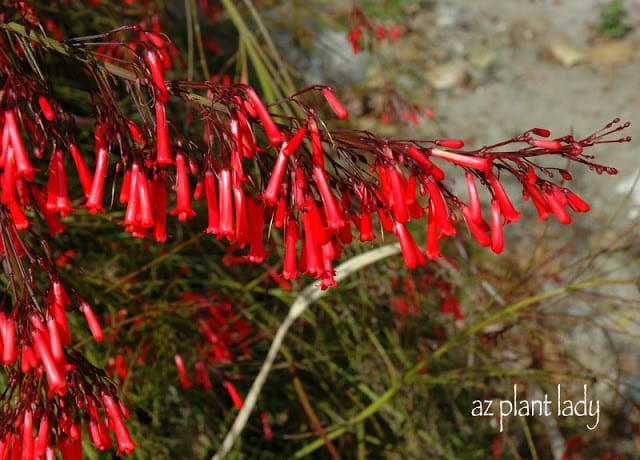
I took all of the photos at The Living Desert Wildlife and Botanical Park in Palm Desert, CA. I visited there with my sister last March.
Why didn’t I take a picture of my own coral fountain? Well, I must admit that I do not have one in my garden.
Okay, so you may well be asking why do I not have a plant that I highly recommend in my garden? Well, that is an excellent question, and I must confess that I do not have a really great answer for you.
I could say that my garden is over 11 years old and already full of plants.
I could then add that if I planted every kind of plant that I loved, that all sense of design in my garden would go out the door because I would have a mish-mash of too many different plants, which is not pleasing to the eye from a design standpoint.
But, those excuses sound kind of pitiful to my own ears. Every time that I drive to Double S Farms (my mother and sister’s home), I pass by a beautifully designed garden which features a coral fountain shrub on the corner. I always look for this plant, and I am still admiring it.
And so, I must admit the truth to myself…… I would love to have this plant in my own garden and will be on the lookout for one the next time I visit the nursery. UPDATE: I now have three of the beautiful plants, growing underneath the filtered shade of my palo verde tree.

